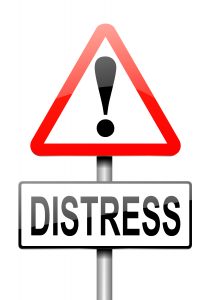Aim: To increase awareness and understanding of the complex issues relating to sensory overload after brain injury and the potential impact upon the person. It is important to recognise that there may be a number of significant contributory factors in the development and maintenance of sensory overload.
Following a significant brain injury some people  find that exposure to normal, everyday levels of particular stimuli (e.g. bright lights, loud noises or touch), is now uncomfortable, overwhelming and/or distressing. This problem may be referred to as ‘hypersensitivity’, ‘over stimulation’ or ‘sensory overload’. This may lead to fear, anxiety and avoidance of particular stimuli (e.g. keeping curtains drawn to avoid light) and environments (e.g. avoiding noisy situations such as supermarkets).
find that exposure to normal, everyday levels of particular stimuli (e.g. bright lights, loud noises or touch), is now uncomfortable, overwhelming and/or distressing. This problem may be referred to as ‘hypersensitivity’, ‘over stimulation’ or ‘sensory overload’. This may lead to fear, anxiety and avoidance of particular stimuli (e.g. keeping curtains drawn to avoid light) and environments (e.g. avoiding noisy situations such as supermarkets).
A ‘stimulus’ is something that requires or causes a response. A stimulus may have its origin in ‘external’ events (e.g. a noise, bright light) or ‘internal’ (e.g. a thought, preoccupations, pain, discomfort, feelings).
It is more common for people to experience loss of sensory function rather than ‘hypersensitivity’ following a significant brain injury. Examples of sensory loss include:
- Loss of sense of smell/taste due to neurological injury.
- Hearing impairment due to fracture of the temporal bone and damage to the vestibulocochlear nerve.
- Changes to sense of touch.
Common problems experienced after significant brain injury include cognitive impairments of processing and attention. This may result in the person experiencing overload in relation to sensory stimuli. Due to changes in attentional ability, screening out intrusive background stimuli may be more difficult (e.g. dripping tap, another person’s conversation, sunlight). This means that background stimuli can often monopolise the person’s attention, potentially leading to the person becoming distracted in the context of trying to complete a task. This may result in failure to complete the task which may be associated with frustration and potentially anger. In the context of changes in attentional ability, it is helpful to try and limit intrusive background stimuli (e.g. dripping tap) in order to maximise the person’s attentional ability.
In the context of cognitive changes described above, the person may become preoccupied with trying to block out/ignore intrusive stimuli. This can result in the development of unhelpful avoidance behaviours (arising from attempts to block out as much of the intrusive stimuli as possible). This could potentially lead to a situation in which the person is going to extreme lengths to avoid certain types of sensory stimuli (e.g. habitually wearing earplugs to reduce the impact of noise or wearing sunglasses to decrease the impact of light). Similarly, if someone experiences headaches  associated with sensitivity to sound or light, then this can also lead to avoidance behaviours.
associated with sensitivity to sound or light, then this can also lead to avoidance behaviours.
Avoidance behaviours may lead to ‘hypersensitisation’ of, for example, auditory and visual sensory systems, resulting in even modest intensity stimuli being experienced as uncomfortable (i.e. feelings of overwhelm/sensory overload/hypersensitivity to the problematic stimuli). As exposure to more intense stimuli is experienced as uncomfortable, this can be compounded by thoughts that particular sensory experiences are harmful, for example exposure to sound will further damage hearing or exposure to bright light is harmful. A cycle of over protection with progressively worsening symptoms may emerge, the whole process potentially being magnified by associated anxiety.
It is important to be aware that sensitivity to light and noise are very common symptoms after a mild traumatic brain injury. These symptoms are more common after a mild traumatic brain injury than they are after a more severe one. They are also common following head injuries in which there has been no loss of consciousness and no period of post traumatic amnesia (meaning that actual injury to the brain itself did not occur). For further information about mild brain injury, please see: http://www.headinjurysymptoms.org/
Following brain injury the situation is complex. Changes in sensitivity (e.g. hypersensitivity) may occur in the context of damage to certain structures (e.g. sensory organs, central and peripheral nervous systems) relevant to the experience of particular sensory symptoms. Nonetheless, it is important to remember that hypersensitivity symptoms can also arise in the absence of any actual structural damage to the sensory pathways but may arise as a result of cognitive impairments of processing and attention as described above.
 If someone has had a severe brain injury, the associated cognitive and/or language impairments may mean they are not always able to recognise and communicate problems related to over stimulation/hypersensitivity. Therefore the discomfort arising from this may be expressed as anxiety, anger, intolerance, pain, distress etc. Unhelpful behaviours may develop that lead to avoidance of the ‘trigger’ stimulus. In some extreme instances, the person’s behaviour may become challenging when carers are trying to provide support for everyday activities.
If someone has had a severe brain injury, the associated cognitive and/or language impairments may mean they are not always able to recognise and communicate problems related to over stimulation/hypersensitivity. Therefore the discomfort arising from this may be expressed as anxiety, anger, intolerance, pain, distress etc. Unhelpful behaviours may develop that lead to avoidance of the ‘trigger’ stimulus. In some extreme instances, the person’s behaviour may become challenging when carers are trying to provide support for everyday activities.
The experience of sensory overload/hypersensitivity can adversely affect:
- General wellbeing and quality of life.
- Social, educational and work related activities.
- Ability and willingness to tolerate necessary care procedures.
- Ability to benefit from rehabilitation.
- Levels of fatigue.
- Physical and cognitive functioning.
- Ability to tolerate living in a care setting with loud noise and high levels of stimulation. This can be very uncomfortable, distressing and potentially increase the experience of fear and anxiety.

For the reasons discussed above, using the term ‘hypersensitivity’ can be an oversimplification. There may be alternative explanations for the symptoms. Consider other potentially important contributory factors which may lead to the development of these types of symptoms. Please refer to the following section:
Causative Medical Conditions and other Contributory Factors to Sensory Overload
Key Messages for the Treatment of Sensory Overload/Hypersensitivity Symptoms
Problems related to cognitive overload and impairments of attention will require a different approach directly addressing the cognitive impairments underpinning this problem. The person’s cognitive difficulties should be identified and assessed. Following this it may be necessary to modify the demands placed upon the person in particular situations in order to reduce levels of stress and anxiety (e.g. decreasing noise levels). Helpful interventions include:
- Cognitive rehabilitation including supporting the person to utilise strategies to manage the impact of their cognitive impairments.
- Implementing strategies to manage the impact of potentially difficult environments upon the person with cognitive impairment (e.g. reducing the amount of visual/auditory stimuli within the environment).
Seek specialist advice from Clinical Neuropsychology or other brain injury specialist.
Causative Medical Conditions and Other Contributory Factors
Sensitivity to Noise/Phonophobia
Sensitivity to Light/Photophobia
Sensitivity to Touch
Distorted Experiences of Taste and Smell
Key Messages for the Treatment of Sensory Overload/Hypersensitivity Symptoms
